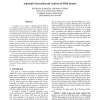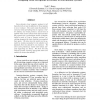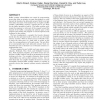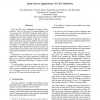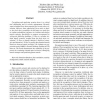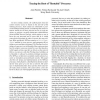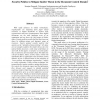ACSAC
2004
IEEE
14 years 3 months ago
2004
IEEE
A common way to elude a signature-based NIDS is to transform an attack instance that the NIDS recognizes into another instance that it misses. For example, to avoid matching the a...
ACSAC
2004
IEEE
14 years 3 months ago
2004
IEEE
Since attackers trust computer systems to tell them the truth, it may be effective for those systems to lie or mislead. This could waste the attacker's resources while permit...
ACSAC
2004
IEEE
14 years 3 months ago
2004
IEEE
Buffer overflow vulnerabilities are caused by programming errors that allow an attacker to cause the program to write beyond the bounds of an allocated memory block to corrupt oth...
ACSAC
2004
IEEE
14 years 3 months ago
2004
IEEE
How can Alice trust computation occurring at Bob's computer? Since it exists and is becoming ubiquitous, the current-generation TCPA/TCG hardware might enable a solution. Whe...
ACSAC
2004
IEEE
14 years 3 months ago
2004
IEEE
ACSAC
2004
IEEE
14 years 3 months ago
2004
IEEE
Correlating and analyzing security alerts is a critical and challenging task in security management. Recently, some techniques have been proposed for security alert correlation. H...
ACSAC
2004
IEEE
14 years 3 months ago
2004
IEEE
In most existing systems, the authorization check for system resource access is based on the user ID of the running processes. Such systems are vulnerable to password stealing/cra...
ACSAC
2004
IEEE
14 years 3 months ago
2004
IEEE
This paper discusses the Trustworthy Computing Security Development Lifecycle (or simply the SDL), a process that Microsoft has adopted for the development of software that needs ...
ACSAC
2004
IEEE
14 years 3 months ago
2004
IEEE
With rapid advances in online technologies, organizations are migrating from paper based resources to digital documents to achieve high responsiveness and ease of management. Thes...
ACSAC
2004
IEEE
14 years 3 months ago
2004
IEEE
Both Java RMI and Jini use a proxy-based architecture. In this architecture, a client interacts with a service through a proxy, which is code downloaded from a directory and insta...
